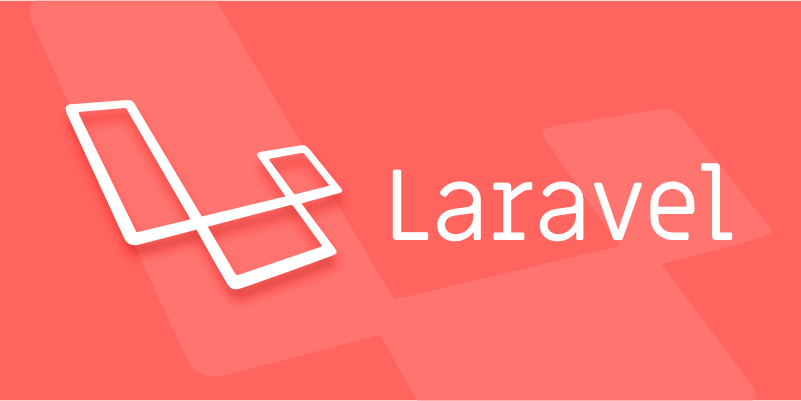Exporting data to CSV/Excel in Laravel (mention common packages).
Jul 20, 2025 am 02:16 AMTo export CSV or Excel files, it is recommended to use the Maatwebsite/Laravel-Excel package. 1. Install this package: composer requires maatwebsite/excel; 2. Optional publishing configuration: php artisan vendor:publish; 3. Create export class: php artisan make:export; 4. Call the Excel::download method in the controller to return the download response; 5. Custom export data can be implemented by implementing collection or query methods; 6. Use WithHeadings, WithMapping and other interfaces to control the format; 7. Enable FromQuery and onQueue queue processing when large data volumes are used to optimize performance.

When you need to export data to CSV or Excel in a Laravel application, there are a few solid packages that make the process straightforward. The most commonly used one is Maatwebsite/Laravel-Excel , which supports both formats and integrates smoothly with Laravel's ecosystem.

Why use a package instead of writing your own?
Trying to handle CSV or Excel exports manually can lead to messy code and edge cases (like handling commas inside fields, encoding issues, or complex Excel formatting). Using a well-maintained package like Laravel Excel saves time and avoids common pitfalls.
Install and set up Laravel Excel
To get started, install the package via Composer:

composer requires maatwebsite/excel
Then, publish the configuration (optional but recommended):
php artisan vendor:publish --provider="Maatwebsite\Excel\ExcelServiceProvider"
This gives you access to config files where you can tweak things like default export format, delimiter for CSVs, etc.

Once installed, you can create an export class using Artisan:
php artisan make:export UsersExport --model=User
This generates a class in the App/Exports directory where you define what data to return.
Exporting data from a controller
You don't want users triggering exports directly from a model or command line — it should happen in a controller so you can return the file as a downloadable response.
Here's how to do it in a controller method:
use App\Exports\UsersExport;
use Illuminate\Http\Request;
use Maatwebsite\Excel\Facades\Excel;
public function exportUsers(Request $request)
{
return Excel::download(new UsersExport(), 'users.csv');
} Change 'users.csv' to 'users.xlsx' if you prefer Excel format. This will trigger a file download when the route is accessed.
Make sure to define the route properly:
Route::get('/export-users', [UserController::class, 'exportUsers'])->name('export.users');
Customizing the exported data
If you need to modify the data before exporting (eg, filter by date, add computed columns), open your export class and adjust the collection() or query() method.
For example, filtering users created in the last 30 days:
use App\Models\User;
use Maatwebsite\Excel\Concerns\FromCollection;
class UsersExport implements FromCollection
{
public function collection()
{
return User::where('created_at', '>=', now()->subDays(30))->get();
}
} Or if you want to format specific cells or rows, you can implement additional concerns like WithMapping , WithHeadings , or ShouldAutoSize .
Some useful interfaces include:
-
WithHeadings– to define custom column headers -
WithMapping– to transform each row before export -
ShouldAutoSize– to automatically adjust column widths in Excel
These give you fine-grained control over the final output without reinventing the wheel.
Handling large datasets efficiently
If you're exporting thousands of records, memory usage can become an issue. Laravel Excel has built-in support for chunked queries and queue-based exports to avoid timeouts and high memory consumption.
To export large datasets in chunks, update your export class like this:
use Maatwebsite\Excel\Concerns\FromQuery;
use Maatwebsite\Excel\Concerns\Exportable;
class UsersExport implements FromQuery
{
use Exportable;
public function query()
{
return User::query(); // Automatically chunks the query
}
}And optionally, dispatch the export to a queue:
public function exportUsers(Request $request)
{
return Excel::download(new UsersExport(), 'users.xlsx')->onQueue('exports');
}This way, the export runs in the background, and the user doesn't have to wait for it to finish.
Depending on your needs, Laravel Excel can be simple or quite powerful. Whether you're just exporting a list of users or generating complex reports with styling and formulas, it's got you covered. Just remember to keep your export logic clean, test different formats, and optimize for performance when needed.
Basically that's it.
The above is the detailed content of Exporting data to CSV/Excel in Laravel (mention common packages).. For more information, please follow other related articles on the PHP Chinese website!

Hot AI Tools

Undress AI Tool
Undress images for free

Undresser.AI Undress
AI-powered app for creating realistic nude photos

AI Clothes Remover
Online AI tool for removing clothes from photos.

Clothoff.io
AI clothes remover

Video Face Swap
Swap faces in any video effortlessly with our completely free AI face swap tool!

Hot Article

Hot Tools

Notepad++7.3.1
Easy-to-use and free code editor

SublimeText3 Chinese version
Chinese version, very easy to use

Zend Studio 13.0.1
Powerful PHP integrated development environment

Dreamweaver CS6
Visual web development tools

SublimeText3 Mac version
God-level code editing software (SublimeText3)
 How to set environment variables in PHP environment Description of adding PHP running environment variables
Jul 25, 2025 pm 08:33 PM
How to set environment variables in PHP environment Description of adding PHP running environment variables
Jul 25, 2025 pm 08:33 PM
There are three main ways to set environment variables in PHP: 1. Global configuration through php.ini; 2. Passed through a web server (such as SetEnv of Apache or fastcgi_param of Nginx); 3. Use putenv() function in PHP scripts. Among them, php.ini is suitable for global and infrequently changing configurations, web server configuration is suitable for scenarios that need to be isolated, and putenv() is suitable for temporary variables. Persistence policies include configuration files (such as php.ini or web server configuration), .env files are loaded with dotenv library, and dynamic injection of variables in CI/CD processes. Security management sensitive information should be avoided hard-coded, and it is recommended to use.en
 What is Configuration Caching in Laravel?
Jul 27, 2025 am 03:54 AM
What is Configuration Caching in Laravel?
Jul 27, 2025 am 03:54 AM
Laravel's configuration cache improves performance by merging all configuration files into a single cache file. Enabling configuration cache in a production environment can reduce I/O operations and file parsing on each request, thereby speeding up configuration loading; 1. It should be enabled when the application is deployed, the configuration is stable and no frequent changes are required; 2. After enabling, modify the configuration, you need to re-run phpartisanconfig:cache to take effect; 3. Avoid using dynamic logic or closures that depend on runtime conditions in the configuration file; 4. When troubleshooting problems, you should first clear the cache, check the .env variables and re-cache.
 How to develop AI intelligent form system with PHP PHP intelligent form design and analysis
Jul 25, 2025 pm 05:54 PM
How to develop AI intelligent form system with PHP PHP intelligent form design and analysis
Jul 25, 2025 pm 05:54 PM
When choosing a suitable PHP framework, you need to consider comprehensively according to project needs: Laravel is suitable for rapid development and provides EloquentORM and Blade template engines, which are convenient for database operation and dynamic form rendering; Symfony is more flexible and suitable for complex systems; CodeIgniter is lightweight and suitable for simple applications with high performance requirements. 2. To ensure the accuracy of AI models, we need to start with high-quality data training, reasonable selection of evaluation indicators (such as accuracy, recall, F1 value), regular performance evaluation and model tuning, and ensure code quality through unit testing and integration testing, while continuously monitoring the input data to prevent data drift. 3. Many measures are required to protect user privacy: encrypt and store sensitive data (such as AES
 How to make PHP container support automatic construction? Continuously integrated CI configuration method of PHP environment
Jul 25, 2025 pm 08:54 PM
How to make PHP container support automatic construction? Continuously integrated CI configuration method of PHP environment
Jul 25, 2025 pm 08:54 PM
To enable PHP containers to support automatic construction, the core lies in configuring the continuous integration (CI) process. 1. Use Dockerfile to define the PHP environment, including basic image, extension installation, dependency management and permission settings; 2. Configure CI/CD tools such as GitLabCI, and define the build, test and deployment stages through the .gitlab-ci.yml file to achieve automatic construction, testing and deployment; 3. Integrate test frameworks such as PHPUnit to ensure that tests are automatically run after code changes; 4. Use automated deployment strategies such as Kubernetes to define deployment configuration through the deployment.yaml file; 5. Optimize Dockerfile and adopt multi-stage construction
 Explain Laravel Eloquent Scopes.
Jul 26, 2025 am 07:22 AM
Explain Laravel Eloquent Scopes.
Jul 26, 2025 am 07:22 AM
Laravel's EloquentScopes is a tool that encapsulates common query logic, divided into local scope and global scope. 1. The local scope is defined with a method starting with scope and needs to be called explicitly, such as Post::published(); 2. The global scope is automatically applied to all queries, often used for soft deletion or multi-tenant systems, and the Scope interface needs to be implemented and registered in the model; 3. The scope can be equipped with parameters, such as filtering articles by year or month, and corresponding parameters are passed in when calling; 4. Pay attention to naming specifications, chain calls, temporary disabling and combination expansion when using to improve code clarity and reusability.
 PHP development user permission management monetization PHP permission control and role management
Jul 25, 2025 pm 06:51 PM
PHP development user permission management monetization PHP permission control and role management
Jul 25, 2025 pm 06:51 PM
User permission management is the core mechanism for realizing product monetization in PHP development. It separates users, roles and permissions through a role-based access control (RBAC) model to achieve flexible permission allocation and management. The specific steps include: 1. Design three tables of users, roles, and permissions and two intermediate tables of user_roles and role_permissions; 2. Implement permission checking methods in the code such as $user->can('edit_post'); 3. Use cache to improve performance; 4. Use permission control to realize product function layering and differentiated services, thereby supporting membership system and pricing strategies; 5. Avoid the permission granularity is too coarse or too fine, and use "investment"
 How to use PHP combined with AI to analyze video content PHP intelligent video tag generation
Jul 25, 2025 pm 06:15 PM
How to use PHP combined with AI to analyze video content PHP intelligent video tag generation
Jul 25, 2025 pm 06:15 PM
The core idea of PHP combining AI for video content analysis is to let PHP serve as the backend "glue", first upload video to cloud storage, and then call AI services (such as Google CloudVideoAI, etc.) for asynchronous analysis; 2. PHP parses the JSON results, extract people, objects, scenes, voice and other information to generate intelligent tags and store them in the database; 3. The advantage is to use PHP's mature web ecosystem to quickly integrate AI capabilities, which is suitable for projects with existing PHP systems to efficiently implement; 4. Common challenges include large file processing (directly transmitted to cloud storage with pre-signed URLs), asynchronous tasks (introducing message queues), cost control (on-demand analysis, budget monitoring) and result optimization (label standardization); 5. Smart tags significantly improve visual
 How to build a content payment platform through PHP How to implement PHP paid reading system
Jul 25, 2025 pm 06:30 PM
How to build a content payment platform through PHP How to implement PHP paid reading system
Jul 25, 2025 pm 06:30 PM
To build a PHP content payment platform, it is necessary to build a user management, content management, payment and permission control system. First, establish a user authentication system and use JWT to achieve lightweight authentication; second, design the backend management interface and database fields to manage paid content; third, integrate Alipay or WeChat payment and ensure process security; fourth, control user access rights through session or cookies. Choosing the Laravel framework can improve development efficiency, use watermarks and user management to prevent content theft, optimize performance requires coordinated improvement of code, database, cache and server configuration, and clear policies must be formulated and malicious behaviors must be prevented.






